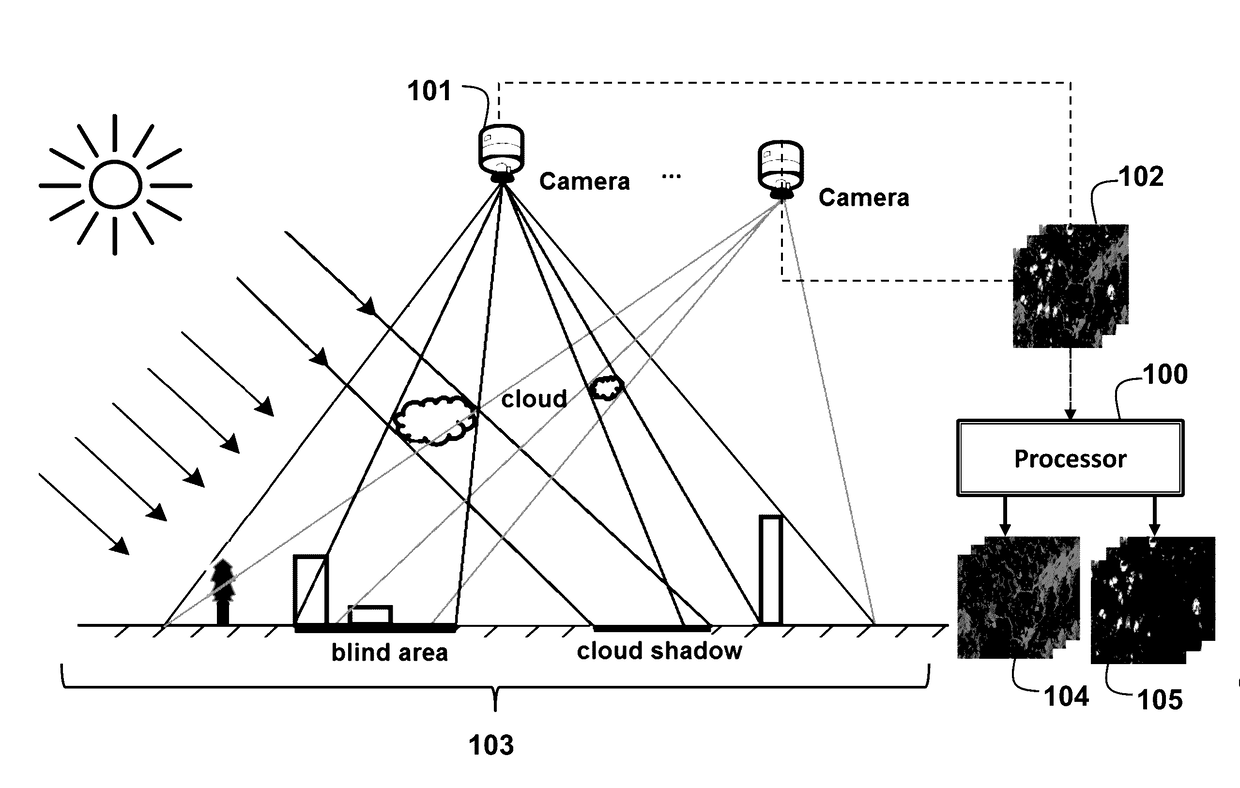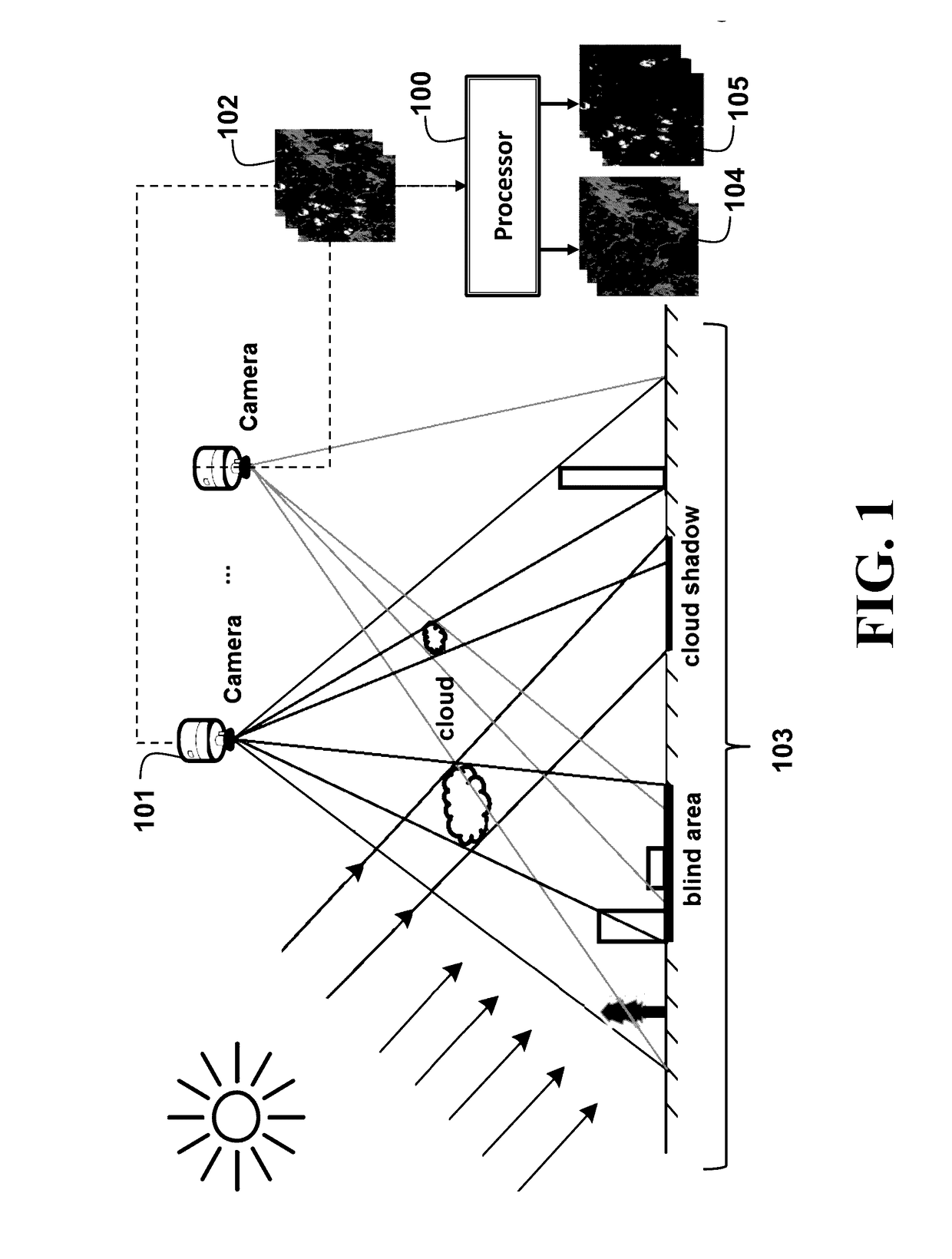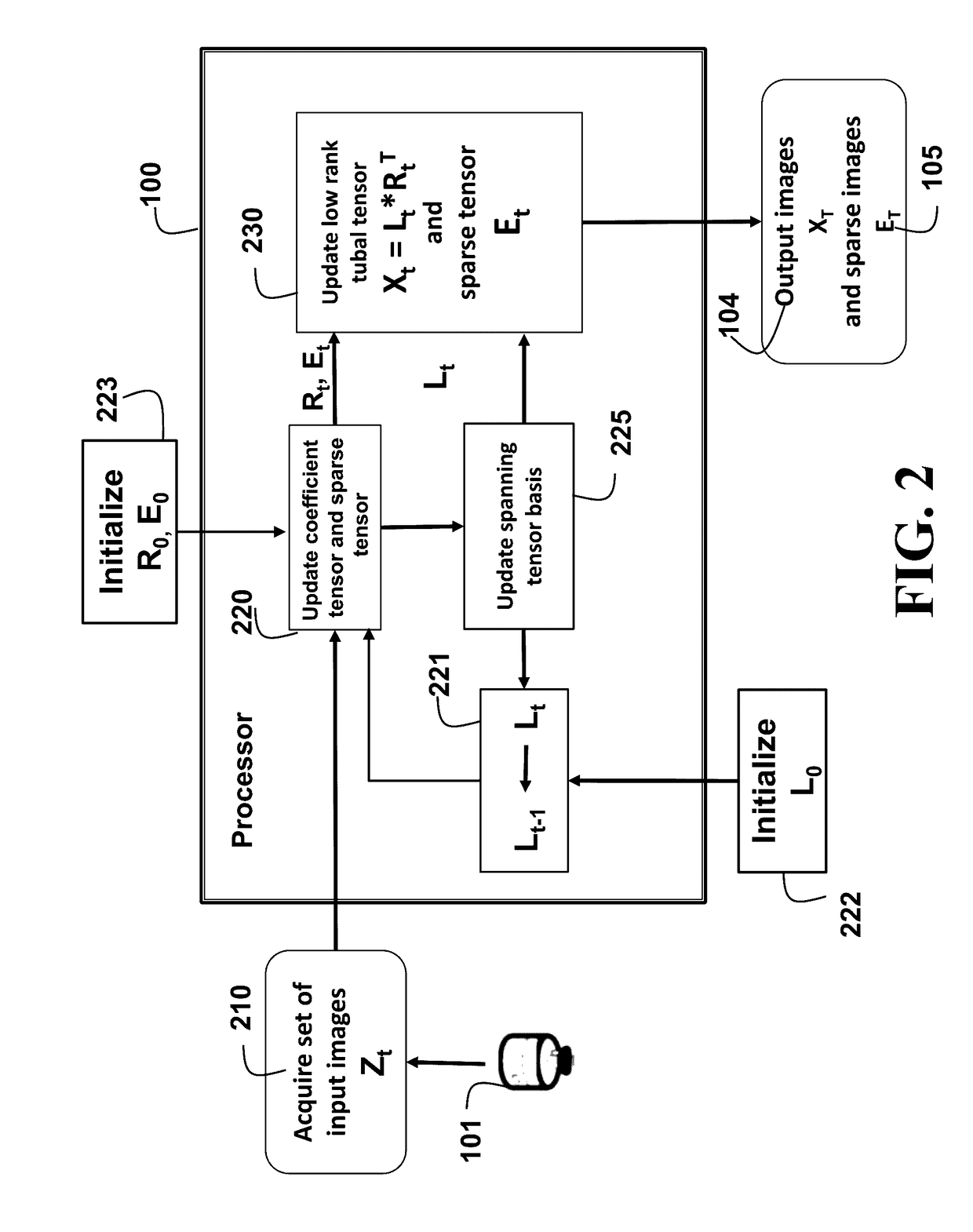System and Method for Processing Images using Online Tensor Robust Principal Component Analysis
a principal component analysis and tensor processing technology, applied in scene recognition, instruments, computing, etc., can solve the problems of reducing the effectiveness of tensor representation in extracting information from multidimensional perspectives, time-consuming for tensor rpca to operate in batch mode, and reducing the required amount of memory , the effect of improving computational efficiency
- Summary
- Abstract
- Description
- Claims
- Application Information
AI Technical Summary
Benefits of technology
Problems solved by technology
Method used
Image
Examples
Embodiment Construction
[0019]FIG. 1 is a schematic of a system for processing images according to embodiments of our invention. A sensor 101, e.g., a camera in a satellite, sequentially captures a set of T input images 102 of a scene 103. The images can be obtained by a single moving sensor at time steps t. Sequential acquisition reduces memory requirements to store the images, because the images are processed online as they are acquired by the sensor and received by a processor. The images can overlap to facilitate registering the images with each other. The images can be gray scale images or color images. In addition, the images can be multi-temporal images or multi-angle view images acquired sequentially.
[0020]In the example application shown in FIG. 1, the sensor is arranged in a moving space or airborne platform (satellite, airplane or drone), and the scene 103 is ground terrain. The scene can include occlusions due to structures in the scene, such as buildings, and clouds between the scene and senso...
PUM
 Login to View More
Login to View More Abstract
Description
Claims
Application Information
 Login to View More
Login to View More - R&D
- Intellectual Property
- Life Sciences
- Materials
- Tech Scout
- Unparalleled Data Quality
- Higher Quality Content
- 60% Fewer Hallucinations
Browse by: Latest US Patents, China's latest patents, Technical Efficacy Thesaurus, Application Domain, Technology Topic, Popular Technical Reports.
© 2025 PatSnap. All rights reserved.Legal|Privacy policy|Modern Slavery Act Transparency Statement|Sitemap|About US| Contact US: help@patsnap.com



